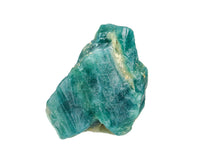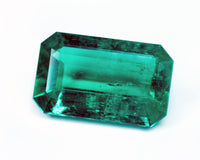- 1. Amethyst
- 2. Legends of Amethyst
- 3. Metaphysical Properties of Amethyst
- 4. Amethyst Colors
- 5. The Value of Amethyst
- 6. Healing Properties of Amethyst
- 7. Magical properties of Amethyst
- 8. Amethyst for Sale Courtesy of KenKenGems
Amethyst
Amethyst is mentioned in the legends of bygone civilizations, religious manuscripts, and even the Bible. It was the stone of gods, rulers, nobility, and clergy. Catholic bishops still wear amethysts rigs as a sign of purity and selfless service. Needless to say, the stone excites the minds of everyone who casts a glance at its breathtaking appearance. It comes as no surprise that it found itself among the most beautiful gemstones for jewelry-making.
Legends of Amethyst
The word Amethyst has a Greek origin. Ancient Greeks called it ‘amethystos’, which means ‘not drunk’. According to legends, the stone was named after the nymph Amethyste. Once Dionysus, the Greek god of winemaking, got insulted by a mortal man. He summoned ferocious tigers and swore to kill the first mortal person who comes his way. The first person he met was young Amethyste. When she saw tigers rushing at her, she started praying to the goddess Artemis for salvation. Artemis took pity on the girl and turned her into stone. In despair, Dionysus tried to resurrect the nymph. He poured wine on the stone but it didn’t help to bring her to life. Instead, the stone changed its color into a vibrant purple.
Ancient Romans have a similar version of this legend involving Bacchus, the Roman god of wine. Bacchus fell in love with a beautiful girl but his feelings weren’t mutual. Angered by her refusal, he decided to take her by force. Fleeing from drunk Dionysus, Amethyste called the goddess Diana for help. She turned the girl into stone and saddened Bacchus colored it purple with his wine.
One more legend says that amethyst was given to Dionysus by Titaness Rhea. This gift was supposed to keep his mind sober at feasts. Knowing the legends about the conjectural origin of amethyst, ancient Greeks treated it with great respect. They believed that the gem was able to prevent intoxication and save from poisoning. For this reason, the nobility received wine exclusively in amethyst-embellished bowls. Also, people wore rings inlaid with the gem at feasts to neutralize the effect of alcohol.
Metaphysical Properties of Amethyst
Amethyst is the most valuable type of quartz, i.e. silicon dioxide. Its chemical composition also includes iron oxide as well as minuscule amounts of such minerals as aluminum, manganese, titanium, lithium, magnesium, at chromium.
The origin of the mineral is associated with the movement of fluids in the earth's crust. These fluids contain parental magma material plus elements absorbed from the surrounding rocks. Mineral-rich solutions evaporate, form deposits, solidify, and turn into gemstones. Amethysts crystallize at rather low temperatures of +60…+ 200 °C. In the bowels of the Earth, amethyst crystals form the so-called druses, i.e. coatings on a rock. Most often, these crystals are prismatic or scepter-like.
The hard (it scored 7.0 on the Mohs scale) semi-precious amethyst is normally transparent with a strong vitreous luster. The gem can change its color depending on the lighting. Under artificial light, some specimens become brighter and acquire a violet-red hue. Brazilian amethysts, on the other hand, may acquire a gray undertone. The property to exhibit a range of colors in different lighting or at different viewing angles is called pleochroism.

Amethyst Colors
Amethyst offers a wide array of colors ranging from pastel to deep ultraviolet. The most common natural colors are violet, purple, lilac, blue-red, pink, and rich cherry. Natural green amethysts (prasiolite) are the rarest.
When being heated, the gemstone changes its hue. The temperature exceeding 250 °C renders it yellow similar to citrine. As the temperature keeps rising, the stone becomes red-brown or deep green. Eventually, when it is heated up to 750 °C, it loses its color whatsoever. It is also possible to restore the original color to the stone with X-rays. Thus, heating and irradiation treatment are able to transform amethyst into other types of quartz.
One more interesting quality of amethyst is color zoning. Amethyst crystals grow slowly, and the composition of fluids that affect its build-up is variable. Fluids rich in iron give the most intense color. Solutions deprived of this mineral produce pale crystals. Over time, amethyst acquires a layered structure displaying various shades of the same color.
The Value of Amethyst
Amethysts aren’t particularly expensive. You can afford a beautiful purple gem even on a modest budget. The value of the stone is largely affected by its color. The most inexpensive specimens are pink and almost colorless. On the other hand, gems boasting a deep purple color may cost a pretty penny.
Typically, the price of a fine faceted stone without visible flaws varies within a $20-30 range per carat. Some extra beautiful specimens may cost around $40 per carat.
Healing Properties of Amethyst
In antiquity, people believed that amethyst was an excellent remedy against infections. Modern lithotherapists claim that the purple stone is able to relieve nervous tension, stress, and insomnia. Stone treatment experts count on amethyst-infused water to improve blood circulation and enrich it with oxygen. Its healing properties are widely used in cosmetology. Amethyst promotes rejuvenation, brightens the skin, and removes rashes. Healers utilize the purple stone to treat migraines, infertility, and gout. On top of that, the gemstone helps fight against addictions as well as eliminates cravings for smoking and overeating.
It is believed that amethyst jewelry has a positive effect on mental health. Mainly, this effect is manifested in curbing anxiety. If you put amethyst under your pillow at night, it will promote deep and tranquil sleep.
Magical properties of Amethyst
The purple gem is a fidelity keeper. It helps build a love nest and keep it warm and happy. Along with that, amethyst is often called the stone of loneliness. It was the choice of widows and widowers to survive the loss of a loved one and find peace of mind. They didn’t want to pursue new relationships hence they opted for the purple gem. That being said, if you’re looking for love, amethysts won’t stand in your way.
It is recommended to keep an amethyst talisman in the bedroom if you want to preserve the purity and strength of your relationship. The stone won’t let feelings fade away. Instead, it will add fuel to the fire of love and protect it from betrayal.
Besides that, amethyst contributes to personal growth and development as well as helps to comprehend the wisdom of the Universe. The purple color of the stone is mystical in itself. It is a conductor between the world visible and invisible to the human eye.
Amethyst for Sale Courtesy of KenKenGems
KenKenGems urges you to explore our exclusive selection of jewelry-grade amethyst stones. Loose gems, strands, one-of-a-kind amethysts, as well as gems set in silver and gold are bound to take pride of place in your jewelry collection. From almost colorless to intense purple, our nuggets, cabochons, and faceted amethysts are a marvel to behold and original amethyst druzy are truly breathtaking. So don’t hesitate to browse through this extensive and budget-friendly amethyst inventory brought to you by KenKenGems.








